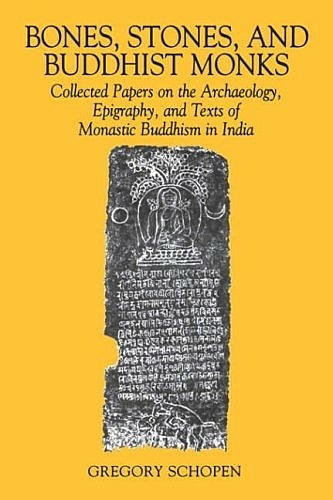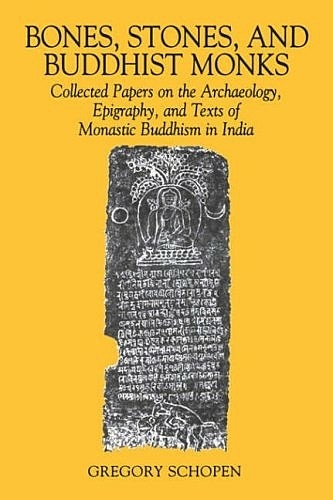Bones, Stones, and Buddhist Monks
Collected Papers on the Archaeology, Epigraphy, and Texts of Monastic Buddhism in India
The present volume provides an essential foundation for a social history of Indian Buddhist monasticism. Challenging the popular stereotype that represented the accumulation of merit as the domain of the layperson while monks concerned themselves with more sophisticated realms of doctrine and meditation, Professor Schopen problematizes many assumptions about the lay-monastic distinction by demonstrating that monks and nuns, both the scholastic elites and the less learned, participated actively in a wide range of ritual practices and institutions that have heretofore been judged “popular,' from the accumulation and transfer of merit; to the care of deceased relatives; to serving as sponsors and donors, rather than always the recipients, of gifts; to (possibly) the coining of counterfeit currency. Taken together, the studies contained in this volume represent the basis for a new historiography of Buddhism, not only for their critique of many the idées reçues of Buddhist Studies but for the compelling connections they draw between apparently disparate details.
No serious scholar of Buddhist studies can afford to ignore this argumentative, challenging, and provocative set of essays.... In each case, Schopen’s arguments are refreshing, honest, often brilliant, and always cogently presented.
Shopen has written a number of articles that have challenged some of the most basic assumptions in the field of Buddhist Studies, and this book is a collection of the most influential of his works. Several are rightly regarded as classic studies in the field, and all should be required reading for anyone with more than a passing interest in Buddhist Studies.
Schopen’s treatment of this material has been extremely insightful and original, and his work has been instrumental in overturning many of the cherished convictions that had long constituted the ‘received wisdom' of Buddhist studies. In particular, his articles have prompted significant revision in thought regarding the development of Mahayana and regarding the role of the monastic religious in Buddhist cultic life.





